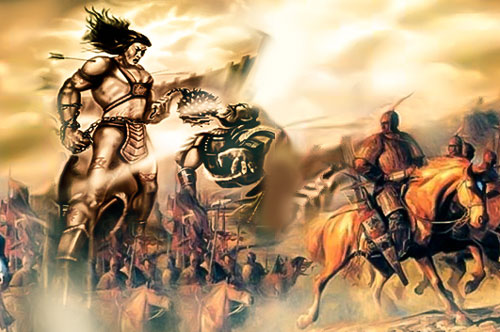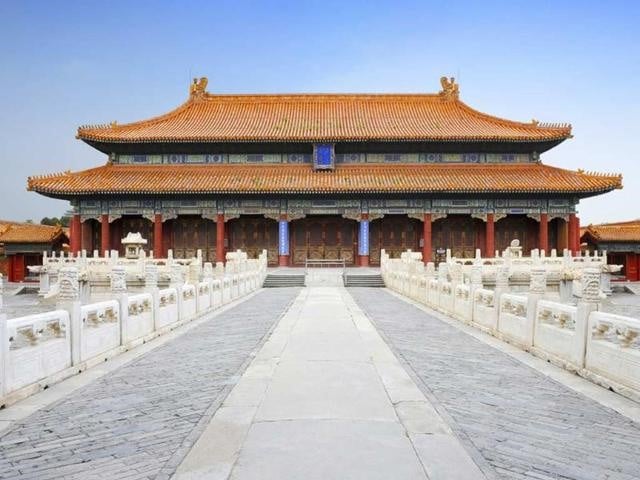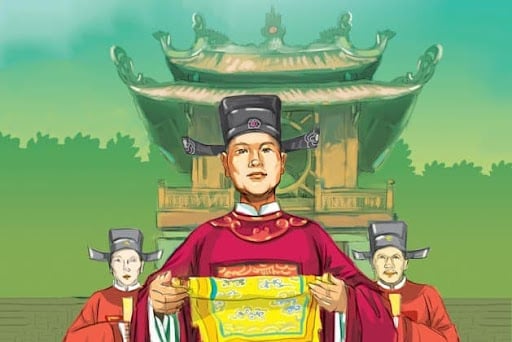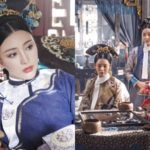Ly Ong Trong helps the Tan family against the Qin invaders

Ly Ong Trong, whose real name is Ly Than, is a legendary character who lived during the end of the Hung Due Vuong period and the beginning of the An Duong Vuong period. He hailed from the village of Chem, Tu Liem, Hanoi. During the 18th reign of the Hung Vuong dynasty, Ly Ong Trong held a minor position in the district. It is said that he was tall, measuring around two truong and three thước. Due to his upright and kind-hearted nature, he once witnessed a wicked soldier from the district brutally beating innocent villagers, and he became enraged and killed the soldier. He was then accused and sentenced to death by the court. However, upon realizing that Ly Ong Trong possessed great talent and morality, the king could not bear to execute him. Afterward, Ly Ong Trong resigned from his position and left to seek knowledge in distant lands.
During the reign of Thuc An Duong Vuong, he became a skilled general who assisted the king and was sent as an envoy to the state of Qin.
During that time, the Tan family often faced attacks from the Qin invaders in the north. Although Qin Shi Huang had constructed the Great Wall, the region was still not secure. Recognizing the military talent of Ly Ong Trong from Au Lac, King Qin expressed his desire for him to help repel the Qin invaders and appointed him as Van Tin Hau. Ly Ong Trong led his troops to defend the land of Lam Thao (present-day Cam Tuc, China), and every time the Qin invaders approached, they were swiftly defeated. The Qin invaders became frightened and stopped trespassing Tan territory. King Qin greatly admired Ly Ong Trong and bestowed upon him high honors. He even married one of his princesses to Ly Ong Trong, hoping to keep him in Qin for a long time. After some time, Ly Ong Trong yearned for his homeland and requested to return to Vietnam to rest.
Upon hearing that Ly Ong Trong had returned, the Qin invaders attacked again. Once again, King Qin sent envoys to Au Lac to invite Ly Ong Trong. However, Ly Ong Trong refused to go, so King Thuc claimed that he had passed away. In desperation, King Qin decided to cast a massive bronze statue of Ly Ong Trong (empty inside, capable of fitting dozens of people, with mechanisms to simulate lifelike movements) and placed it at the Kim Ma gate in the capital city of Ham Duong. The Qin invaders mistakenly believed that Ly Ong Trong had returned to Qin, and they dared not invade the kingdom. From then on, people from the northern region often referred to large statues as “Ong Trong”.
The Forbidden City is the work of the Vietnamese people

The Forbidden City in Beijing has become a cultural symbol that the Chinese people take pride in. However, few people know that the chief architect of the Forbidden City was a Vietnamese person.
His name was Nguyen An, born during the late Tran dynasty. According to Kien Van Tieu Luc by Le Quy Don, Nguyen An was originally from Ha Dong Province, which is now part of Hanoi. From a young age, he showed exceptional intelligence and was taught by a Chinese teacher who had defected to Vietnam. Thanks to this excellent mentorship, Nguyen An’s talents in architecture flourished. At the age of 16, he was already involved in the construction of palaces for the Tran dynasty.
In 1406, the Ming dynasty sent troops to invade the Ho dynasty and captured Hồ Quý Ly and his son, bringing them back to China. In 1407, the Ming emperor issued an edict demanding the capture of learned individuals, skilled craftsmen, and talented youths from our country to serve China. Among those captured was Nguyen An.
Once in China, Nguyen An was assigned to the imperial engineers’ team. At that time, the Ming dynasty was building the city of Beijing as its capital. Hearing of Nguyen An’s architectural skills, the Ming emperor entrusted him with the task of constructing the Forbidden City. Although the officials in the Ministry of Public Works initially objected, they eventually followed Nguyen An’s calculations and design, which were accurate and meticulous.
Under Nguyen An’s guidance, the Forbidden City in Beijing was completed as a magnificent complex consisting of 800 palaces and 8,886 rooms covering an area of 720,000 square meters. According to Professor Tran Ngoc Them in Saigon Giai Phong newspaper, this work showcased distinct architectural influences from Vietnam. One notable characteristic was the concept of “front palace, back market,” wherein the palace faced forward while the trading area was located behind it. While previous Chinese imperial cities were square-shaped, the Forbidden City was rectangular. The most prominent feature was the three layers of walls, as opposed to one or two layers in previous capital cities. According to Professor Thêm, this demonstrated the Vietnamese mindset that valued odd numbers and bore resemblance to our Co Loa Citadel.
Nguyen An’s contributions to the construction of the Forbidden City are still acknowledged in ancient Chinese historical records such as Hoang Minh Thong Ky and Anh Tong Chinh Thong Thuc Luc.
The founder of artillery in China
The Chinese have long been known as the originators of firearms. However, few people know that it was the Vietnamese who taught the Chinese the art of casting guns and cannons. The master who accomplished this was none other than Ho Nguyen Trung. He was the eldest son of Ho Quy Ly and had an exceptional talent for gunsmithing and cannon casting. After the Ho dynasty was overthrown by the Ming dynasty, he and his family, along with other officials, were captured and brought to China.
In China, the Ming court recognized Trung’s talent in creating new and more powerful firearms. As a result, he was employed as an instructor and contributed to the significant advancements China made in the use of gunpowder in warfare. Kien Van Documentary by Le Quy Don states: “Trung is skilled in gun-making and has created miraculous firearms for the court. To this day, all military weapons must be made according to Trung’s designs.” In the book Thong Ky, it is also mentioned that during the reign of Emperor Vinh Lac (1403-1424), a cavalry of 3,000 horsemen from the Ho dynasty was established, and they were equipped with firearms. After learning the methods of creating such weapons, they established the military unit of firearms.
Tran Quoc Vuong, a historian who researched Chinese history, affirms in Minh’s historical records that firearms were first introduced to China during the reign of Emperor Thanh To (1403-1424) when they fought against Giao Chau. The creation of firearms marked a significant advancement in the Chinese military, and they established the first artillery unit in China and even among all humanity. It is clear that our ancestors were ahead of the Chinese in the field of artillery technology.
Trang Nguyen, a minister of the Tang dynasty

In feudal times, the historical relationship between Vietnam and China involved many Vietnamese diplomats who were proficient in diplomatic skills, and they were consequently awarded the title of Trang Nguyen by the Chinese emperors. However, this was only a form of honorary title. But starting from the 8th century, when our country was still under Tang domination, the Vietnamese people demonstrated intelligence equal to the Chinese.
In the year 784, Khương Công Phụ, an ordinary person from Yen Dinh (Thanh Hoa) under the rule of the Tang dynasty, took the imperial examination and earned the title of Trang Nguyen, surpassing thousands of Chinese scholars.
According to the book Chuyen Thi Cu Va Lap Nghiep by an old student, Khương Công Phụ was born into a family that sold herbal medicine. From an early age, he was known for his intelligence, so his parents sent him to study under a Chinese teacher who was originally a Confucian scholar but fled to Vietnam to live in seclusion. Thanks to this excellent education, Công Phụ’s talents continued to flourish.
During the district-level examinations, only eight An Nam scholars were allowed to participate in the examination in Truong An. However, Công Phụ surpassed all the other candidates in the examinations and consistently ranked first among the examinees. In the Truong An examination, he passed the Trang Nguyen examination and went on to serve as a high-ranking official and later as the Prime Minister under Emperor Duong Tuoc.
Scholars in China still greatly admire Công Phụ. Scholar La Si Bang commented: “During the Tang dynasty, literary talent was highly regarded in the selection of officials. Those from Annam who aspired to become officials had to follow this trend. Công Phụ, having passed the imperial examination, held high positions such as Tể phụ (Prime Minister), so his poetry and literature must have been profound and exceptional… Only in Toan Duong Van, book 446, are two poems recorded: Bach Van wrote Xuân Hải chiếu and Duối cực trực gián sách. Through these two heavenly verses, we can understand the writing and knowledge of a literary talent.”































